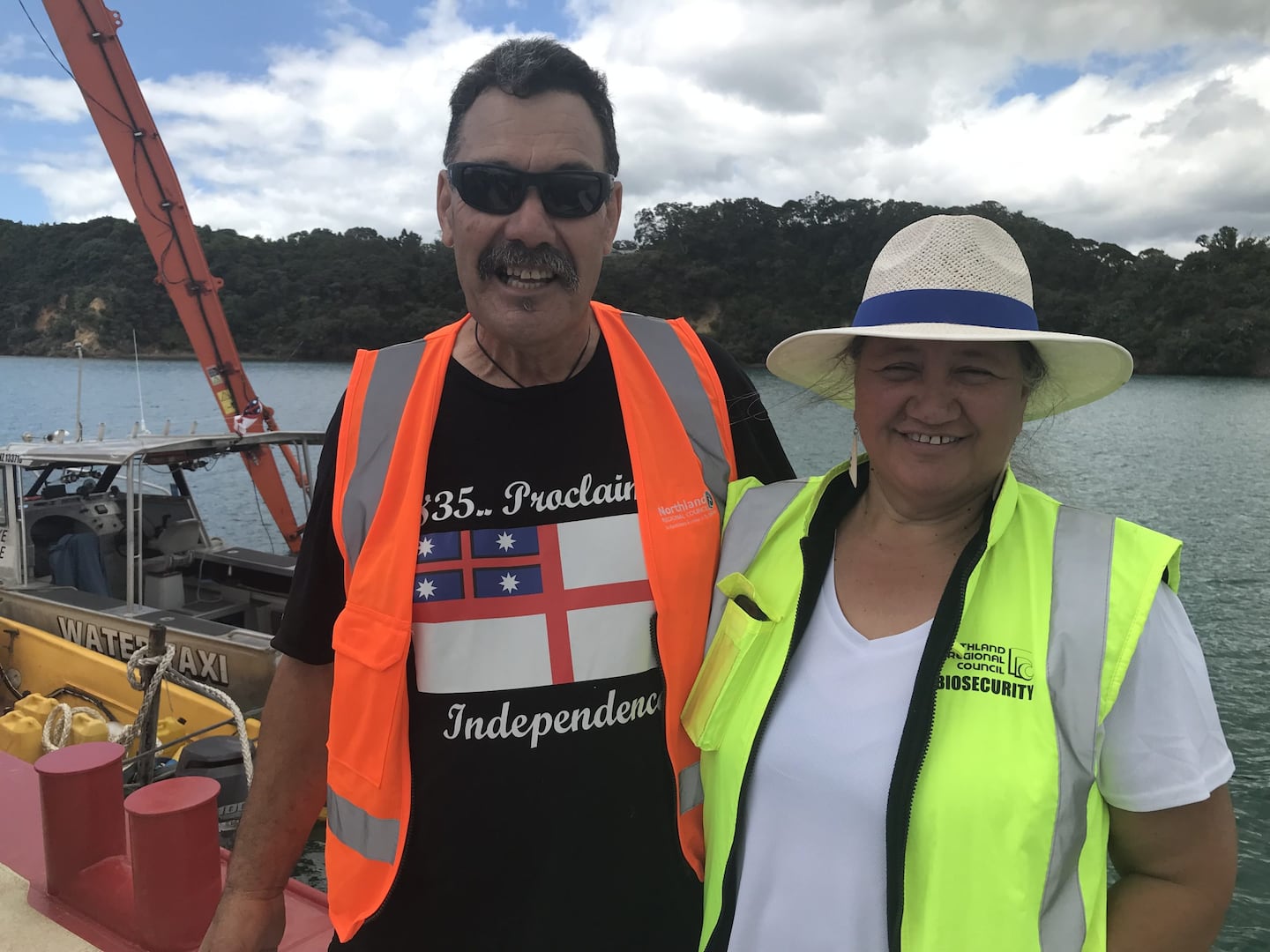A Bay of Islands community member has hit out at the government for the lack of a management plan against the invasive exotic seaweed caulerpa ahead of this summer’s influx of thousands of boats.
Internationally important caulerpa eradication technology is being developed apace in the Bay of Islands caulerpa infestation Omākiwi stronghold.
But Eastern Bay of Islands Te Rāwhiti community kaitiaki Louise Clarke (Ngāti Kuta) said caulerpa surveillance and education work needed to continue in conjunction with that, to stop the pest’s spread in the meantime.
And this was not happening.
Clarke’s criticism comes as boats continue to illegally anchor inside the Bay of Islands’ government caulerpa anchoring ban area - including in the invasive pest’s Omākiwi Cove infestation epicentre – where a yacht in the last week brought up 100kg of the seaweed on its anchor as it started to depart the bay.
And the summer peak for the 1000 boats that pour into the Bay of Islands each year has already begun.
The government anchoring ban has also been backed up with a rāhui imposed by Te Rāwhiti hapū Ngāti Kuta and Patukeha over the same area, preventing boat anchoring, fishing, kaimoana harvesting and diving.
Anchoring is one of the main ways the invasive seaweed spreads. Even a tiny piece of caulerpa the size of a freckle can quickly create a new rapidly-growing infestation in a new location.
Ngāti Kuta and Patukeha played a key caulerpa surveillance and education role in the caulerpa fight last summer, speaking to owners of more than 70 boats illegally anchored in the Bay of Islands caulerpa anchoring ban area, which includes Omākiwi Cove, Rāwhiti, Waipiro Bay and Parekura Bay,during funded surveillance work.
About 100 boats have been identified in the Bay of Islands by ambassadors as illegally anchored inside the anchoring ban area since it was imposed.
Clarke said surveillance by local hapū Ngāti Kuta this season had already revealed more than two dozen boats found illegally anchored in the Bay of Islands caulerpa ban area between August and October.
But Clarke said this hapū-funded surveillance mahi stopped in October as there had been no contact from the government about its caulerpa management plans including for surveillance and education and associated funding indication for this season.
That means there has been no illegal anchoring surveillance during November or December- as summer boat movement around the Bay of Islands build.
Longtime Te Rāwhiti resident Clarke said caulerpa was the worst threat to the area she had ever seen.
“The Ministry for Primary Industries needs to talk with us to develop a plan, with funding.
“We need to have a plan and funding to go with that,” she said.
Boat anchoring has now been banned across more than 1000 hectares of the eastern Bay of Islands in an effort to stop the spread of the invasive seaweed.
Exotic caulerpa infestations spread across the seafloor to form thick mats, smothering habitats for the small creatures at the bottom of the food chain, thereby destroying ecosystems that support kaimoana gathering areas for local hapū and iwi.

Ministry for Primary Industries business unit Biosecurity New Zealand pest management director John Walsh did not specifically indicate why the Bay of Islands caulerpa surveillance and education plan was not already in place, given the peak summer boating season is already underway.
Walsh said this planning work was underway.
Biosecurity New Zealand was providing funding locally for the development of this season’s caulerpa management plan in the Bay of Islands.
He said $1 million had been allocated nationally for engagement and communication for boaties and fishers this season – including for the Bay of Islands.
Walsh acknowledged Ngāti Kuta’s work in last summer’s education and ambassador programmes and that they had been paid for that mahi.
“While details are still being finalised, there will be an opportunity for work of this nature to continue,” Walsh said.
Local Democracy Reporting is local body journalism funded by RNZ and NZ On Air


